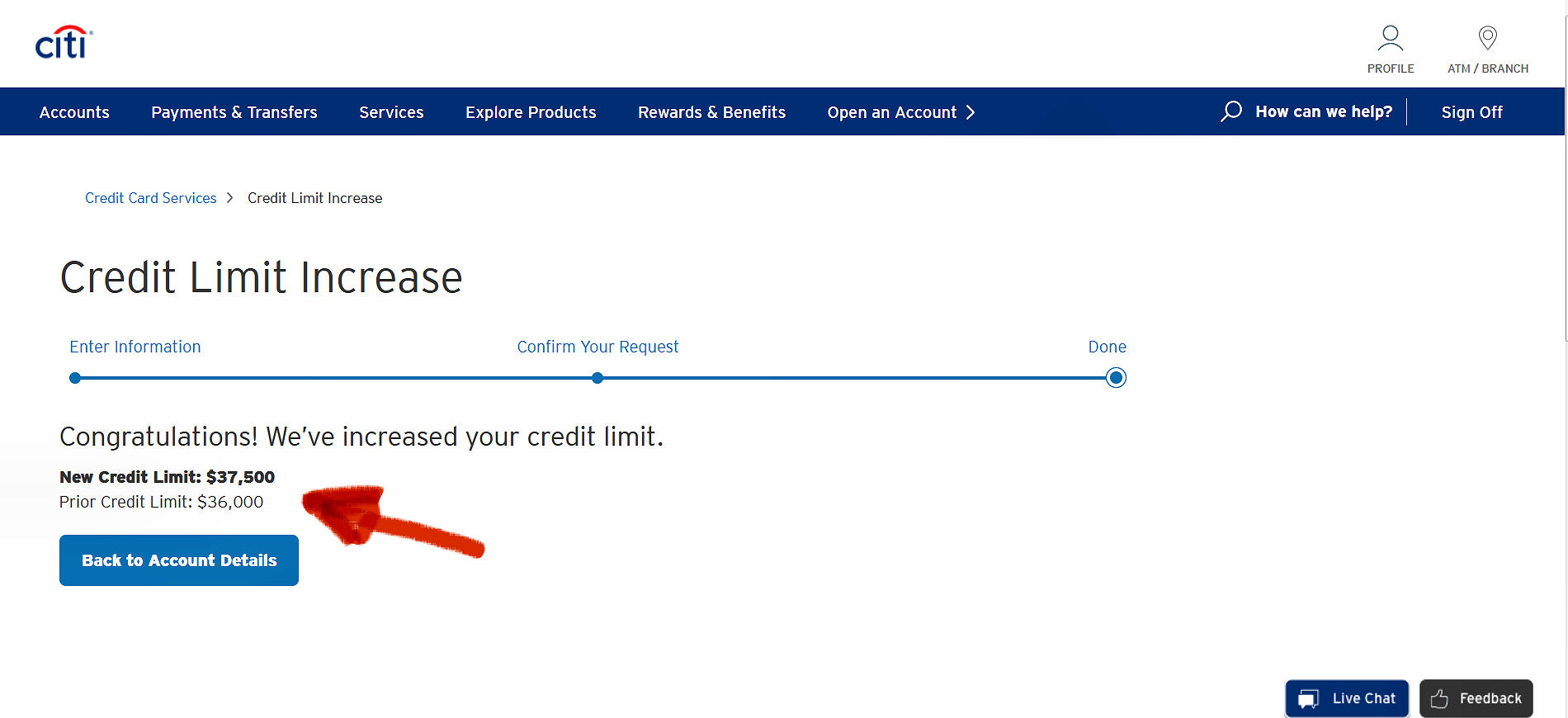

Finance
How To Do A Balance Transfer With Capital One
Published: February 18, 2024
Learn how to do a balance transfer with Capital One to manage your finances more effectively. Take control of your finances with our step-by-step guide.
(Many of the links in this article redirect to a specific reviewed product. Your purchase of these products through affiliate links helps to generate commission for LiveWell, at no extra cost. Learn more)
Table of Contents
Overview of Balance Transfers
A balance transfer involves moving existing credit card debt from one card to another, typically to take advantage of a lower interest rate. This financial maneuver can help individuals save money on interest payments and pay off their debts more efficiently. When considering a balance transfer, it's crucial to understand the process, associated fees, and the impact it can have on your financial situation.
Why Consider a Balance Transfer?
Many individuals opt for balance transfers to escape high-interest rates on their current credit cards. By transferring their balance to a card with a lower interest rate, they can reduce the overall cost of their debt and potentially pay it off more quickly. This can be particularly advantageous for individuals with substantial credit card debt, as it provides an opportunity to consolidate multiple balances into one, streamlining the repayment process.
Benefits and Considerations
Before initiating a balance transfer, it's essential to weigh the benefits against any potential drawbacks. While it can lead to significant interest savings, there are often associated fees, such as balance transfer fees and annual fees on the new card. Additionally, the new card's credit limit and the duration of any promotional interest rates should be carefully assessed to ensure they align with your financial goals.
Impact on Credit Score
It's important to note that a balance transfer can impact your credit score. When you apply for a new credit card to facilitate the transfer, the issuer will perform a hard inquiry, which can cause a temporary dip in your score. However, by reducing your overall credit utilization through the transfer and making timely payments, you can positively influence your credit score over time.
Considerations for Multiple Balances
For individuals juggling multiple credit card balances, a balance transfer can simplify their financial landscape. By consolidating these balances onto a single card, they can streamline their payments and potentially benefit from a lower interest rate, making it easier to track their progress toward debt freedom.
Understanding the ins and outs of balance transfers is crucial for making informed financial decisions. By carefully evaluating the benefits, potential drawbacks, and long-term implications, individuals can leverage balance transfers to their advantage and take significant strides toward financial stability.
Understanding Balance Transfer Fees and Terms
When considering a balance transfer, it’s essential to grasp the associated fees and terms to make informed decisions and avoid unexpected costs. While balance transfers can offer substantial interest savings, understanding the fine print is crucial for a smooth and cost-effective transfer process.
Balance Transfer Fees
One of the primary considerations when initiating a balance transfer is the balance transfer fee. This fee is typically calculated as a percentage of the amount being transferred and is added to the new card’s balance. While some credit cards offer promotional periods with waived or reduced balance transfer fees, it’s essential to carefully review the terms to understand the fee structure and factor it into your cost-benefit analysis.
Introductory vs. Standard Interest Rates
When exploring balance transfer options, it’s important to differentiate between introductory and standard interest rates. Many credit card issuers offer promotional periods with significantly reduced or 0% interest rates for a specified duration, making it an attractive option for individuals looking to aggressively pay down their debt. However, it’s crucial to understand the standard interest rate that will apply after the promotional period ends to assess the long-term cost of the transferred balance.
Annual Fees and Other Considerations
Aside from balance transfer fees and promotional interest rates, individuals should also consider the annual fees associated with the new credit card. While a card may offer favorable terms for balance transfers, the presence of an annual fee can impact its overall cost-effectiveness. Additionally, it’s important to review the card’s rewards program, if applicable, and any other terms that may influence its suitability for your financial needs.
Terms and Conditions
Thoroughly reviewing the terms and conditions of the new credit card is imperative to avoid any surprises down the line. Understanding the minimum monthly payments, potential penalties for late payments, and other terms related to the balance transfer can help individuals navigate the process with confidence and mitigate any avoidable costs.
By gaining a comprehensive understanding of balance transfer fees and terms, individuals can make informed decisions that align with their financial goals. Careful consideration of these factors can lead to a successful balance transfer experience, enabling individuals to optimize their debt repayment strategy and achieve greater financial stability.
How to Initiate a Balance Transfer with Capital One
Initiating a balance transfer with Capital One can be a straightforward process, offering individuals the opportunity to consolidate their credit card debt and potentially save on interest payments. By following a few simple steps, cardholders can efficiently transfer their balances to a Capital One credit card with favorable terms.
Step 1: Selecting the Right Capital One Card
The first step in initiating a balance transfer with Capital One is to choose the most suitable credit card for your financial needs. Capital One offers a range of credit cards with varying features, including promotional balance transfer offers, competitive interest rates, and rewards programs. By assessing your priorities, such as minimizing interest costs or earning rewards, you can select a card that aligns with your goals.
Step 2: Reviewing Balance Transfer Terms
Before proceeding with the balance transfer, carefully review the terms and conditions associated with the selected Capital One credit card. Pay close attention to the balance transfer fee, promotional interest rate duration, and any annual fees to ensure a clear understanding of the potential costs and benefits of the transfer.
Step 3: Initiating the Transfer
Once you have chosen the appropriate Capital One credit card and familiarized yourself with the associated terms, you can initiate the balance transfer through the card issuer’s designated channels. This typically involves providing the details of the account(s) from which you wish to transfer balances, such as the account numbers and the respective outstanding balances.
Step 4: Monitoring the Transfer
After initiating the balance transfer, it’s important to monitor the process to ensure that the balances are successfully transferred to your Capital One credit card. This may involve tracking the status of the transfer through online account management tools or contacting Capital One’s customer service for updates, if necessary.
Step 5: Managing the Transferred Balances
Once the balances have been successfully transferred to your Capital One credit card, it’s essential to manage them responsibly. Making timely payments and leveraging any promotional interest rates to reduce interest costs can contribute to a successful and cost-effective balance transfer experience.
By following these steps and staying informed about the terms and conditions, individuals can navigate the process of initiating a balance transfer with Capital One effectively. This can lead to potential interest savings and a streamlined approach to managing credit card debt.
Managing Your Balance Transfer
Effectively managing a balance transfer is essential to maximize its benefits and navigate the repayment process with confidence. Once the balances have been successfully transferred to a new credit card, proactive management strategies can contribute to a streamlined debt repayment experience and potentially lead to significant interest savings.
Organizing and Tracking Balances
After completing a balance transfer, it’s beneficial to organize and track the transferred balances. This may involve creating a comprehensive list of the original balances, their respective interest rates, and the new account to which they have been transferred. Maintaining a clear overview of these details can facilitate efficient debt management and aid in creating a structured repayment plan.
Utilizing Promotional Interest Rates
If the new credit card offers promotional interest rates for balance transfers, it’s advantageous to leverage this feature to minimize interest costs. By prioritizing payments toward the transferred balances during the promotional period, individuals can make significant progress in reducing their overall debt and potentially accelerate the path to financial freedom.
Timely Payments and Responsible Credit Management
Consistently making timely payments on the new credit card is crucial for maintaining a positive credit standing and avoiding unnecessary fees or interest charges. By adhering to the payment due dates and managing the overall credit utilization, individuals can foster a healthy credit profile while effectively addressing their transferred balances.
Monitoring Progress and Adjusting Strategies
Regularly monitoring the progress of the balance transfer and assessing its impact on overall debt reduction is essential. This can involve tracking the decreasing balances, evaluating the interest savings compared to the previous credit card(s), and adjusting repayment strategies as necessary to optimize the process.
Exploring Additional Financial Tools
In conjunction with managing the transferred balances, individuals may explore additional financial tools and resources to support their debt repayment journey. This could include utilizing budgeting apps, seeking financial counseling, or exploring debt consolidation options to further streamline their financial obligations.
By implementing these management practices and remaining proactive throughout the balance transfer process, individuals can effectively navigate their debt repayment journey and potentially achieve substantial interest savings. A well-managed balance transfer can serve as a catalyst for improved financial wellness and a clearer path to debt freedom.
Tips for a Successful Balance Transfer
Embarking on a balance transfer journey requires careful consideration and proactive strategies to ensure a smooth and successful experience. By incorporating the following tips, individuals can optimize the benefits of a balance transfer and navigate the process with confidence, ultimately paving the way for improved financial stability.
1. Thoroughly Research and Compare Offers
Prior to initiating a balance transfer, it’s crucial to conduct thorough research and compare offers from various credit card issuers. Evaluating factors such as promotional interest rates, balance transfer fees, and the long-term benefits of the new card can empower individuals to make informed decisions and select the most advantageous option for their financial needs.
2. Understand the Fine Print
Reading and comprehensively understanding the terms and conditions associated with the balance transfer offer is essential. Paying close attention to details such as promotional interest rate durations, standard interest rates after the promotional period, and any associated fees can prevent surprises and facilitate informed financial planning.
3. Calculate the Cost-Benefit Analysis
Conducting a cost-benefit analysis that compares the potential interest savings with the associated fees and costs of the balance transfer can provide clarity on its overall financial impact. This analysis can aid in determining whether the transfer aligns with long-term debt repayment goals and offers tangible benefits.
4. Avoid New Charges on the New Card
To maximize the effectiveness of a balance transfer, it’s advisable to refrain from making new charges on the new credit card, particularly if it carries a promotional interest rate for transferred balances. Focusing on repaying the transferred balances without accruing additional debt can expedite the debt repayment process.
5. Create a Repayment Plan
Developing a structured repayment plan for the transferred balances can provide a clear roadmap for debt reduction. Allocating specific amounts toward the balances, prioritizing higher-interest debts, and adhering to the plan can contribute to a disciplined and effective approach to debt management.
6. Monitor Credit Score and Progress
Regularly monitoring the impact of the balance transfer on credit scores and overall debt reduction progress is important. Observing improvements in credit utilization and the decreasing balances can offer motivation and insights into the positive effects of the transfer.
7. Seek Professional Guidance if Needed
For individuals navigating complex debt situations or seeking personalized financial advice, consulting with a financial advisor or credit counselor can offer invaluable support. These professionals can provide tailored guidance and strategies to optimize the balance transfer process and achieve long-term financial goals.
By integrating these tips into their balance transfer approach, individuals can position themselves for a successful and rewarding debt repayment journey. With careful planning, informed decision-making, and proactive management, a balance transfer can serve as a pivotal step toward financial empowerment and debt freedom.
Conclusion
Embarking on a balance transfer journey presents a valuable opportunity for individuals to take control of their credit card debt and work towards financial freedom. By understanding the nuances of balance transfers, selecting the right credit card issuer, and implementing effective management strategies, individuals can leverage this financial tool to their advantage.
Throughout this process, careful consideration of balance transfer fees, promotional interest rates, and the long-term implications of the transfer is paramount. Thorough research, informed decision-making, and a clear understanding of the associated terms and conditions can empower individuals to make the most suitable choices for their financial well-being.
Initiating a balance transfer with a reputable issuer such as Capital One involves thoughtful planning and a proactive approach. By selecting the most advantageous credit card, monitoring the transfer process, and managing the transferred balances responsibly, individuals can set the stage for a successful debt repayment journey.
Furthermore, by adhering to best practices such as creating a structured repayment plan, avoiding new charges on the new card, and seeking professional guidance when needed, individuals can optimize the benefits of a balance transfer and pave the way for improved financial health.
Ultimately, a well-executed balance transfer can lead to significant interest savings, streamlined debt management, and a clearer path to debt freedom. By integrating the insights and strategies outlined in this guide, individuals can embark on their balance transfer journey with confidence, empowered to take control of their financial future.
As individuals navigate the realm of balance transfers, informed decision-making, proactive management, and a focus on long-term financial goals can pave the way for a successful and rewarding debt repayment experience. With the right approach, a balance transfer can serve as a catalyst for improved financial wellness and a clear trajectory towards debt freedom.














